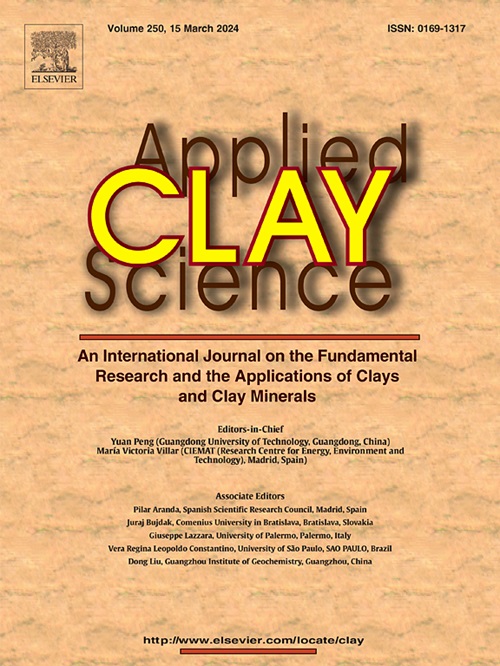层状双层hydroixdes@MXene (LDHs@MXene)复合材料的最新进展:合成、性能和催化应用
IF 5.3
2区 地球科学
Q2 CHEMISTRY, PHYSICAL
引用次数: 0
摘要
化石燃料的过度使用导致了严重的能源短缺和环境污染,引起了全球的关注。光催化已成为解决全球能源和环境挑战的一项有前途的技术。通过利用太阳能驱动化学反应,光催化过程实现了清洁能源的生产和环境污染物的降解。开发具有分层结构、低成本和大表面积的新材料为解决这些挑战和促进可持续发展提供了一个有希望的策略。因此,为了达到预期的光催化效果,有必要设计出活性、可靠、价格合理的催化剂或光催化剂。二维纳米材料在许多领域都被认为是高效的光催化剂。两种最好的二维纳米材料是层状双氢氧化物(LDHs)和MXene,由于其不同的性质,它们在几个方面相互补充。本文对LDHs/MXene纳米复合材料的研究现状进行了综述,重点介绍了LDHs/MXene纳米复合材料的技术、结构形态及其在超级电容器、水分解和光催化还原污染物等方面的应用。并对影响复合材料形貌的各种因素进行了详细讨论,以进一步了解复合材料的形貌控制机理。最后,展望了LDHs/MXene纳米复合材料在光催化领域的发展前景和面临的挑战。本文章由计算机程序翻译,如有差异,请以英文原文为准。
Recent advances in layered double hydroixdes@MXene (LDHs@MXene) composites: Synthesis, properties, and catalytic applications
The overuse of fossil fuels has led to severe energy shortages and environmental pollution, raising global concern. Photocatalysis has emerged as a promising technology for addressing global energy and environmental challenges. By harnessing solar energy to drive chemical reactions, photocatalytic processes enable clean energy production and the degradation of environmental pollutants. The development of new materials featuring layered structures, low cost, and large surface areas offers a promising strategy to address these challenges and promote sustainable development. Therefore, it is necessary to design active, dependable, and reasonably priced catalysts or photocatalysts in order to achieve the intended photocatalytic outcomes. 2D nanomaterials may generally be identified as efficient photocatalysts in various fields. Two of the best 2D nanomaterials are layered double hydroxides (LDHs) and MXene, complement each other in several ways because of their distinct properties. The lack of research on LDHs/MXene nanocomposites is filled by this comprehensive review, which focuses on techniques, structural morphologies, and their applications such as supercapacitors, water splitting and photocatalytic reduction of pollutants. Various factors influencing the composite's morphology in order to give more understanding of the morphology control mechanism were also discussed in details. Finally, the current challenges for using LDHs/MXene nanocomposites for photocatalysis and future prospects in this field were also explored.
求助全文
通过发布文献求助,成功后即可免费获取论文全文。
去求助
来源期刊

Applied Clay Science
地学-矿物学
CiteScore
10.30
自引率
10.70%
发文量
289
审稿时长
39 days
期刊介绍:
Applied Clay Science aims to be an international journal attracting high quality scientific papers on clays and clay minerals, including research papers, reviews, and technical notes. The journal covers typical subjects of Fundamental and Applied Clay Science such as:
• Synthesis and purification
• Structural, crystallographic and mineralogical properties of clays and clay minerals
• Thermal properties of clays and clay minerals
• Physico-chemical properties including i) surface and interface properties; ii) thermodynamic properties; iii) mechanical properties
• Interaction with water, with polar and apolar molecules
• Colloidal properties and rheology
• Adsorption, Intercalation, Ionic exchange
• Genesis and deposits of clay minerals
• Geology and geochemistry of clays
• Modification of clays and clay minerals properties by thermal and physical treatments
• Modification by chemical treatments with organic and inorganic molecules(organoclays, pillared clays)
• Modification by biological microorganisms. etc...
 求助内容:
求助内容: 应助结果提醒方式:
应助结果提醒方式:


